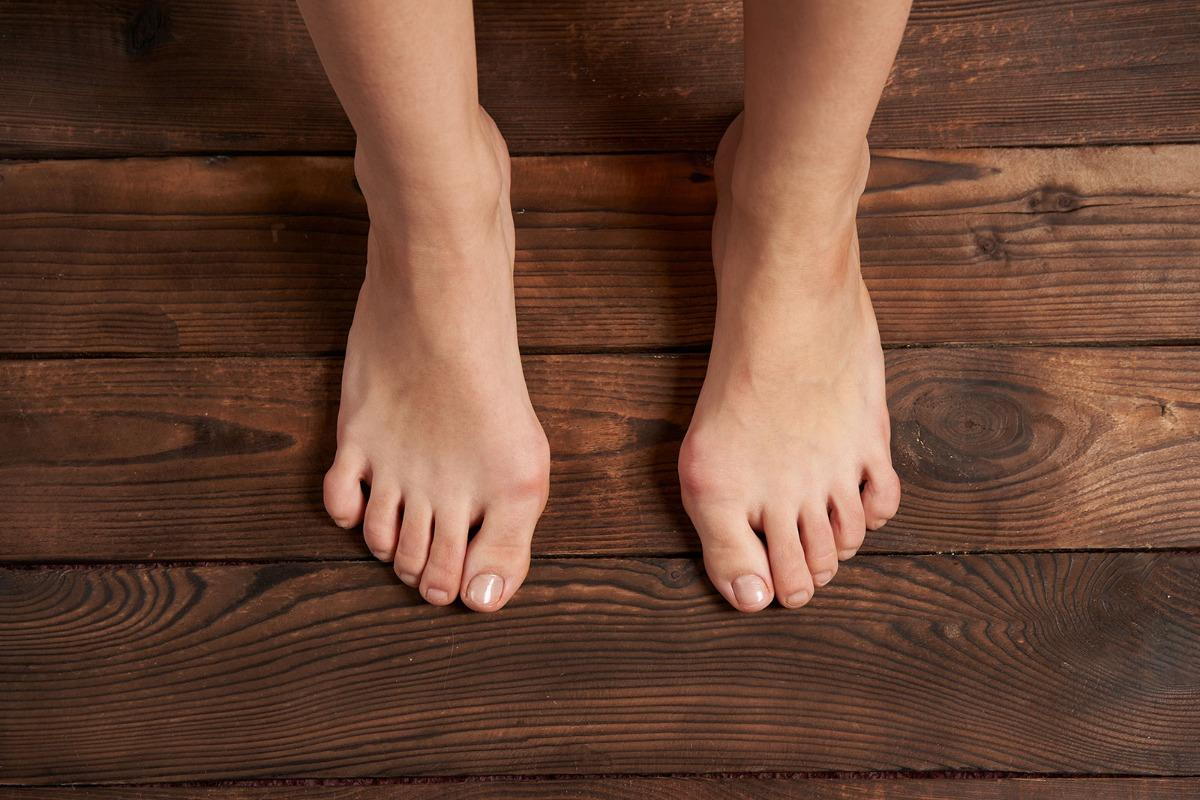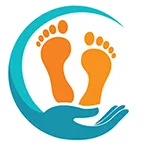Flat Feet and Bunions: A Guide to Relief and Prevention

- posted: Mar. 14, 2024
If you've ever experienced discomfort or pain in your feet, you might have come across flat feet and bunions. These two conditions are often interlinked, causing discomfort and impacting your overall foot health. Here's a comprehensive guide on what flat feet and bunions are, the difference between the two, and effective management strategies to reduce discomfort.
Understanding Flat Feet and Bunions
Flat feet and bunions are common foot conditions that can significantly impact your daily life. Understanding these conditions will help you effectively manage and prevent these foot conditions.
How to Know if You Have Flat Feet
Flat feet, also known as fallen arches, occur when the arches of the feet collapse, causing the entire sole to come into contact with the ground. This condition can be genetic or develop over time due to factors like aging, obesity, or injury.
When you have flat feet, the distribution of weight across your feet becomes uneven, leading to excessive strain on certain areas, including the big toe joint.
What are Bunions?
Bunions are bony bumps that form at the base of the big toe. They develop gradually, often due to the misalignment of the big toe joint.
While genetics can predispose you to bunions, they are also associated with wearing ill-fitting shoes, particularly those with narrow-toe boxes. The pressure exerted by tight footwear can exacerbate the misalignment of the big toe joint, leading to the development of bunions.
The Relationship Between Flat Feet and Bunions
The relationship between flat feet and bunions lies in their impact on foot mechanics. When you have flat feet, your feet are prone to overpronation, meaning they roll inward excessively with each step. This inward rolling motion can cause the big toe to push against the adjacent toes, further contributing to the formation of bunions.
Additionally, the instability caused by flat feet can lead to abnormal pressure distribution, exacerbating bunion formation and discomfort.
Effective Management Strategies for Flat Feet and Bunions
Managing flat feet and bunions involves addressing their underlying causes while providing relief from symptoms. Here are some effective strategies to consider:
Orthotic Inserts
Custom or over-the-counter orthotic inserts can provide support to the arches and help correct foot alignment. By stabilizing the feet and reducing overpronation, orthotics can alleviate pressure on the big toe joint and prevent further bunion development.
Proper Footwear
Wearing shoes with ample room in the toe box and good arch support is crucial for managing both flat feet and bunions. Opt for shoes with a wide toe box to accommodate the natural shape of your feet and reduce pressure on the toes. Avoid high heels and narrow, pointy shoes, as they can exacerbate bunion pain and discomfort.
Strength and Flexibility Exercises
Strengthening the muscles in your feet and improving flexibility can help support the arches and reduce the risk of overpronation. Incorporate exercises like toe curls, arch lifts, and calf stretches into your routine to enhance foot stability and mobility.
Footwear Modifications
In some cases, modifying your shoes or using padding can alleviate pressure on bunions and provide relief from discomfort. Toe spacers or cushions can help separate and protect the toes, reducing friction and irritation.
Surgical Intervention
In severe cases where conservative measures fail to provide relief, surgical intervention may be necessary to correct the alignment of the big toe joint and remove the bunion. However, surgery is typically considered a last resort and should only be pursued after exhausting nonsurgical options.
Consult with a Podiatrist for Flat Feet and Bunion Concerns
Taking proactive steps to care for your feet can make a significant difference in your overall foot health and quality of life. If you're experiencing persistent foot pain or discomfort, consult a healthcare professional for personalized guidance and treatment options.
Dr. James Hurst is a podiatrist in Centerville, VA. Schedule a consultation with Dr. James Hurst for any concerns about flat feet and bunions. Prioritize your foot health today and lead a more comfortable and active tomorrow!

- posted: Mar. 14, 2024
If you've ever experienced discomfort or pain in your feet, you might have come across flat feet and bunions. These two conditions are often interlinked, causing discomfort and impacting your overall foot health. Here's a comprehensive guide on what flat feet and bunions are, the difference between the two, and effective management strategies to reduce discomfort.
Understanding Flat Feet and Bunions
Flat feet and bunions are common foot conditions that can significantly impact your daily life. Understanding these conditions will help you effectively manage and prevent these foot conditions.
How to Know if You Have Flat Feet
Flat feet, also known as fallen arches, occur when the arches of the feet collapse, causing the entire sole to come into contact with the ground. This condition can be genetic or develop over time due to factors like aging, obesity, or injury.
When you have flat feet, the distribution of weight across your feet becomes uneven, leading to excessive strain on certain areas, including the big toe joint.
What are Bunions?
Bunions are bony bumps that form at the base of the big toe. They develop gradually, often due to the misalignment of the big toe joint.
While genetics can predispose you to bunions, they are also associated with wearing ill-fitting shoes, particularly those with narrow-toe boxes. The pressure exerted by tight footwear can exacerbate the misalignment of the big toe joint, leading to the development of bunions.
The Relationship Between Flat Feet and Bunions
The relationship between flat feet and bunions lies in their impact on foot mechanics. When you have flat feet, your feet are prone to overpronation, meaning they roll inward excessively with each step. This inward rolling motion can cause the big toe to push against the adjacent toes, further contributing to the formation of bunions.
Additionally, the instability caused by flat feet can lead to abnormal pressure distribution, exacerbating bunion formation and discomfort.
Effective Management Strategies for Flat Feet and Bunions
Managing flat feet and bunions involves addressing their underlying causes while providing relief from symptoms. Here are some effective strategies to consider:
Orthotic Inserts
Custom or over-the-counter orthotic inserts can provide support to the arches and help correct foot alignment. By stabilizing the feet and reducing overpronation, orthotics can alleviate pressure on the big toe joint and prevent further bunion development.
Proper Footwear
Wearing shoes with ample room in the toe box and good arch support is crucial for managing both flat feet and bunions. Opt for shoes with a wide toe box to accommodate the natural shape of your feet and reduce pressure on the toes. Avoid high heels and narrow, pointy shoes, as they can exacerbate bunion pain and discomfort.
Strength and Flexibility Exercises
Strengthening the muscles in your feet and improving flexibility can help support the arches and reduce the risk of overpronation. Incorporate exercises like toe curls, arch lifts, and calf stretches into your routine to enhance foot stability and mobility.
Footwear Modifications
In some cases, modifying your shoes or using padding can alleviate pressure on bunions and provide relief from discomfort. Toe spacers or cushions can help separate and protect the toes, reducing friction and irritation.
Surgical Intervention
In severe cases where conservative measures fail to provide relief, surgical intervention may be necessary to correct the alignment of the big toe joint and remove the bunion. However, surgery is typically considered a last resort and should only be pursued after exhausting nonsurgical options.
Consult with a Podiatrist for Flat Feet and Bunion Concerns
Taking proactive steps to care for your feet can make a significant difference in your overall foot health and quality of life. If you're experiencing persistent foot pain or discomfort, consult a healthcare professional for personalized guidance and treatment options.
Dr. James Hurst is a podiatrist in Centerville, VA. Schedule a consultation with Dr. James Hurst for any concerns about flat feet and bunions. Prioritize your foot health today and lead a more comfortable and active tomorrow!
Main Location
5729 Centre Square Dr,
Centreville, VA 20120
Monday
7:30 am - 4:00 pm
Tuesday
7:30 am - 4:00 pm
Wednesday
7:30 am - 4:00 pm
Thursday
7:30 am - 4:00 pm
Friday
7:30 am - 3:00 pm
Saturday
Closed
Sunday
Closed
